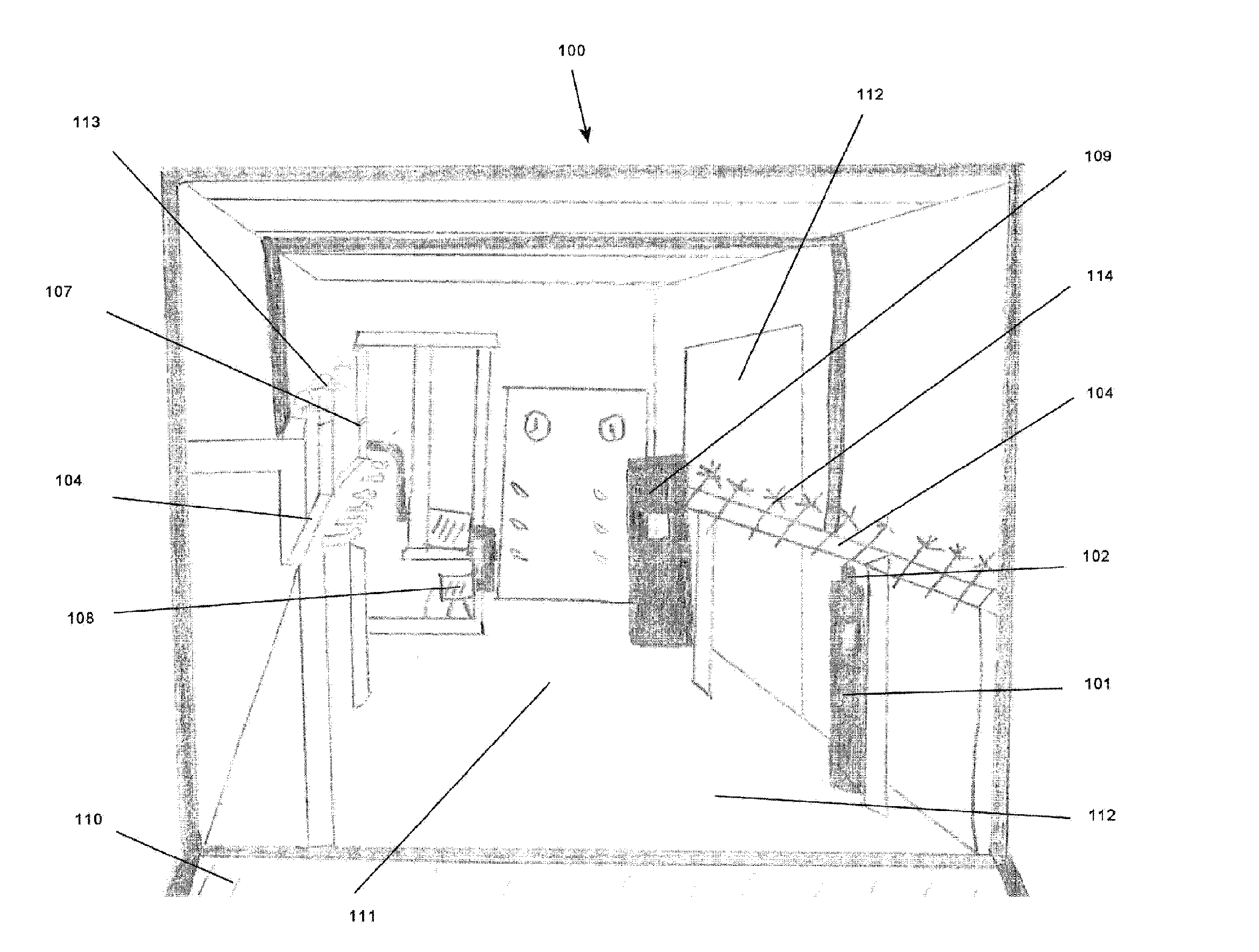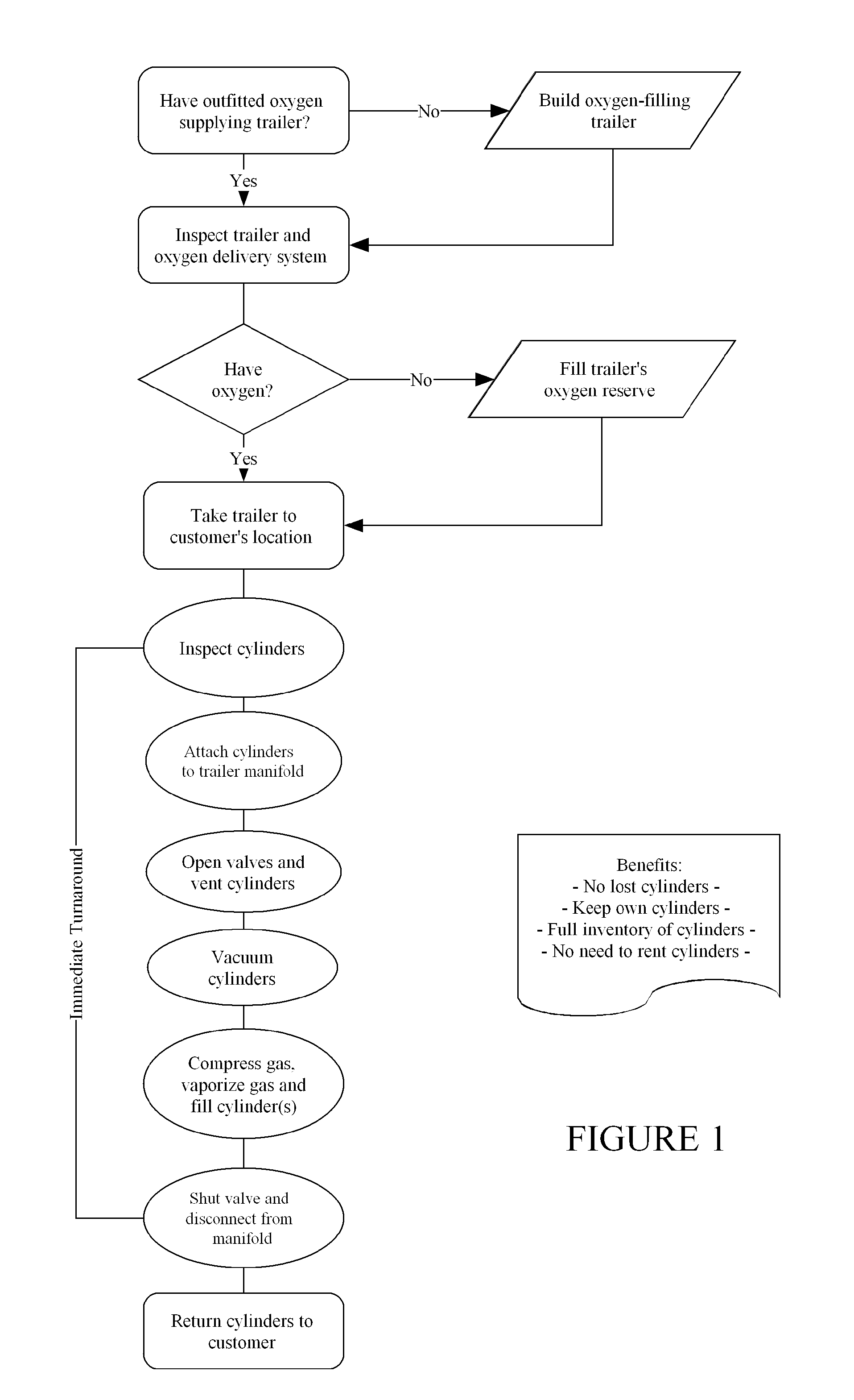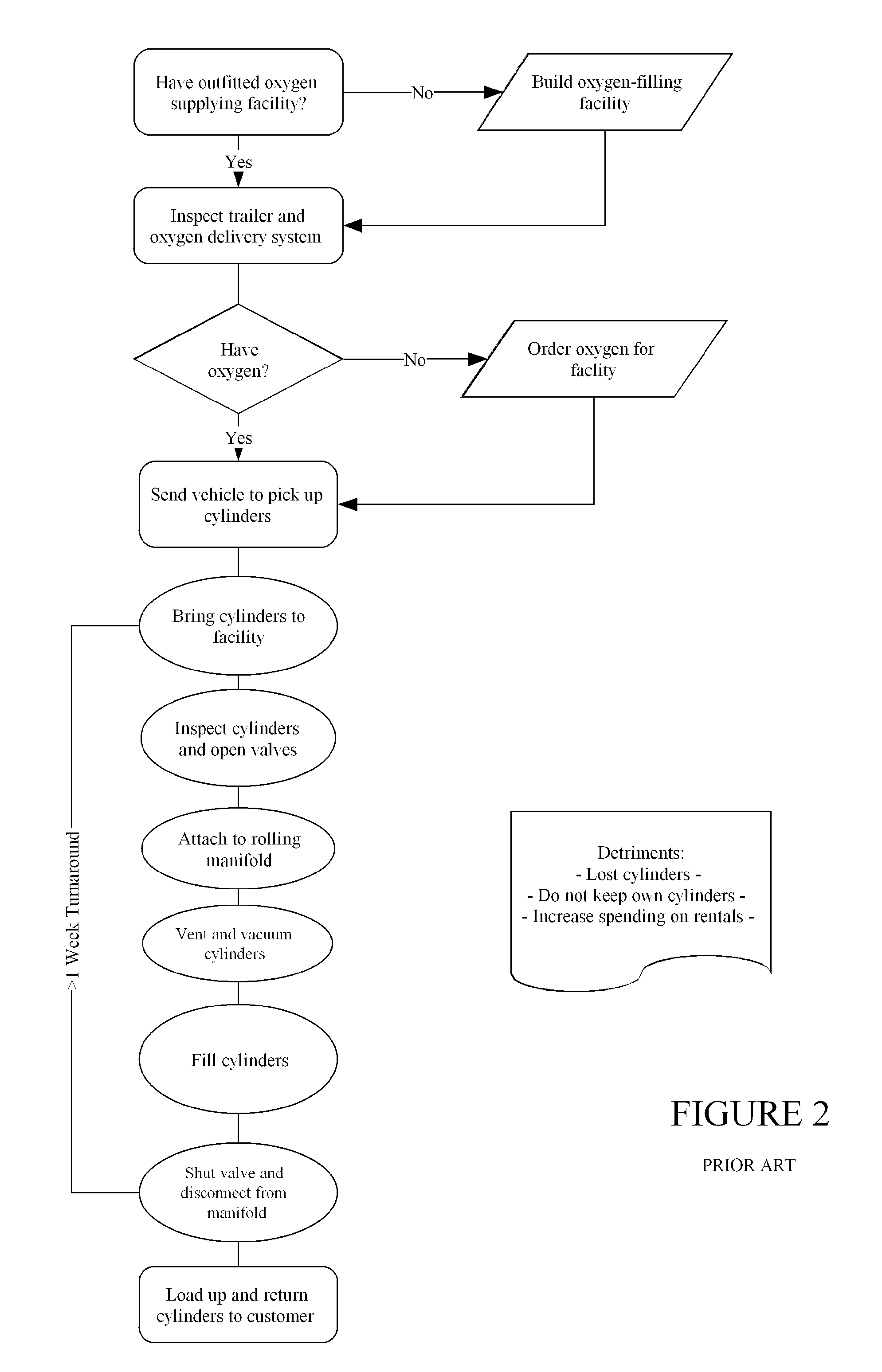Mobile transfilling system
a technology of transfilling system and canister, which is applied in the direction of liquid handling, container discharging methods, transportation and packaging, etc., can solve the problems of increased complexity and time commitment, increased complications, and increased cost of maintaining facilities and associated equipment needed to run the same, so as to prolong the life of the canister, reduce the cost of maintenance, and reduce the effect of labor intensity
- Summary
- Abstract
- Description
- Claims
- Application Information
AI Technical Summary
Benefits of technology
Problems solved by technology
Method used
Image
Examples
Embodiment Construction
[0022] Without any intent to limit the scope of this invention, reference is made to the figures in describing the various embodiments of the invention. FIGS. 1-4 show various aspects of exemplary embodiments of the present invention.
[0023] Transfilling station 100 requires certain accommodations over the prior art method of transfilling in order to be contained in the footprint of the mobile trailer or vehicle. Most of these concessions are necessitated by a relative lack of space, but also by other considerations, such as mobility, weight, efficiency and the like. The basic design of transfilling station 100 is that of an enclosed trailer, having typically four walls, a floor and a ceiling creating an enclosed space 111.
[0024] Such considerations include a change in the design of the typical moving, assembly line-type system. In current implementation, the canisters 101 are placed on a moving apparatus, and much in the fashion of an assembly line process, canisters 101 are trans...
PUM
 Login to View More
Login to View More Abstract
Description
Claims
Application Information
 Login to View More
Login to View More - R&D
- Intellectual Property
- Life Sciences
- Materials
- Tech Scout
- Unparalleled Data Quality
- Higher Quality Content
- 60% Fewer Hallucinations
Browse by: Latest US Patents, China's latest patents, Technical Efficacy Thesaurus, Application Domain, Technology Topic, Popular Technical Reports.
© 2025 PatSnap. All rights reserved.Legal|Privacy policy|Modern Slavery Act Transparency Statement|Sitemap|About US| Contact US: help@patsnap.com



